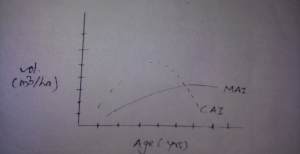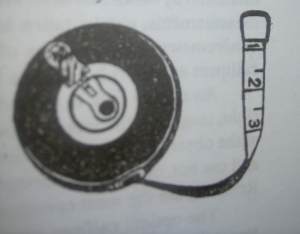
CAI is the increment which a tree puts on in a single year. The CAI varies from year to year being affected by seasonal conditions and treatments.
MAI is the mean volume of a tree or crop put on from origin up to the desired age i.e. the total increment up to a given age divided by that age.
If when the curves of Current and Mean annual increments are plotted over tree age, the two do not coincide with each other through out the life of the tree except at two periods one at the end of first year and the other at the culmination of MAI.The CAI rises to maximum and then gradually fall off.The MAI also increases to a maximum at a later age but with much lower rate.The MAI continues to rise towards maximum even after the CAI has started falling.
When the CAI falls to such an extent it is equal to MAI, the MAI reaches its highest points. This is the year of culmination of the MAI. At later stage, the CAI is less than the MAI, and MAI also beings to drop but not as rapid as that of CAI. THE CAI will be zero and also negative when there is rot or other damages resulting in negative CAI. But the MAI value is never Zero and negative like CAI.



